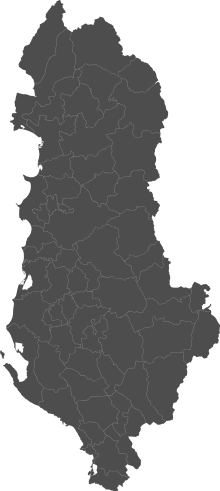Tropojë
Tropojë (definite Albanian form: Tropoja) is a municipality in Kukës County, northern Albania, near the border with Kosovo.[a] It was formed at the 2015 local government reform by the merger of the former municipalities Bajram Curri, Bujan, Bytyç, Fierzë, Lekbibaj, Llugaj, Margegaj and Tropojë, that became municipal units. The seat of the municipality is the town Bajram Curri. The total population is 20,517 (2011 census),[1] in a total area of 1058.04 km2.[2] The population of the former municipality at the 2011 census was 4,117.[1] The non-navigable Valbonë River flows through the municipality.
Tropojë | |
|---|---|
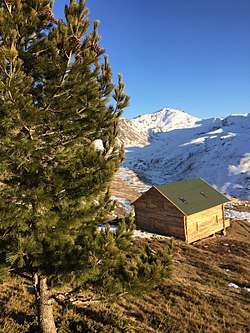 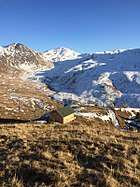  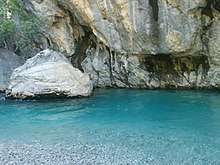  Clockwise from top: Monument of Bajram Curri with the ethnographic museum in the background, popular tourist destination of Doberdol, Snowing in Tropojë, the Valbonë River and the panoramic view of Valbonë National Park | |
 Emblem | |
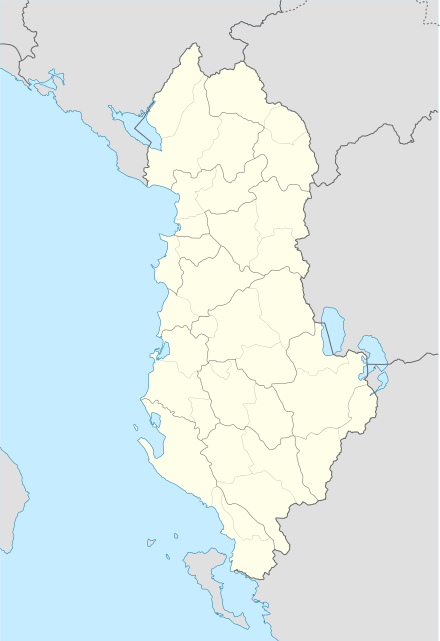 Tropojë | |
| Coordinates: 42°24′N 20°10′E | |
| Country | |
| County | Kukës |
| Government | |
| • Mayor | Rexhë Byberi (PS) |
| Area | |
| • Municipality | 1,058.04 km2 (408.51 sq mi) |
| Population (2011) | |
| • Municipality | 20,517 |
| • Municipality density | 19/km2 (50/sq mi) |
| • Municipal unit | 4,117 |
| Demonym(s) | Tropojan/e |
| Time zone | UTC+1 (CET) |
| • Summer (DST) | UTC+2 (CEST) |
| Postal Code | 8702-8703 |
| Area Code | (0)213 |
| Vehicle registration | AL |
| Website | Official Website |
Etymology
Tropojë's old name was Trebopolje and is recorded in Albanian, Ottoman and possibly Serbian medieval charters and registers. The name of the city comes from the albanian word "trapo" that means to go up. The city of tropoja is in high mountains
History
Archaeological evidence found in the area, such as castles or tumuli show that the area was populated since the ancient time.[3] The region lies in the geographical span of the Dardanii tribes.
Tropojë is a county with its regional center being Kolgecaj (today's Bajram Curri). Tropoja was the center of the commercial trade from the east (Kosovo Vilayet) to the west (Scutari Vilayet) in order to get imported products from the Adriatic Sea. One of the principal trade commodities was salt, which was exchanged for agricultural products. Having this geographical importance, Tropojë was the center of the former highlands of the famous and old city of Gjakova. Tropojë e Vjetër is also the name of a pass, which goes through the mountains, where the people from all over this region go during the summer to relax, and to have access in the green fields with their cattle. In modern times, these highlands attract tourists, especially those from Europe and Israel.
Demographics
The population of the commune is officially listed at 5,606 inhabitants; however, this figure includes many inhabitants who have emigrated from the area but still keep their original registration. A large number of Tropojans have moved to Tirana and are employed by state institutions, while still retaining their registration in Tropojë. The city of Kamëz is a popular location for many emigrants from the commune. The locals belong to the Ghegs, an ethnographic group of Albanians living in the northern parts. Although most Gheg Muslims are Sunni, there is a notable presence of Sufi Halveti structures clustered in Tropojë, as well as one in the nearby town of Shoshan in the eastern part of the neighboring Margegaj commune.[4] There is also a significant Catholic minority.[5]
Economy
Agriculture
Tropojë has many agricultural products and is famous for its chestnuts, apples, nuts, grapes, and especially blueberries.
Mineral exploration
Large reserves of platinum, rhodium, ruthenium, palladium, iridium, and osmium have been discovered in Tropojë. Albanian, Italian, and Chinese engineers, working for Albanian Minerals and Bytyci ShPK in Tropojë, suggest the area may have more than 500 million tons of chrome ore and more than two billion tons of olivine in which platinum is 5–7 grams present per ton. This gigantic body of ore is one of the largest in the world.
Land registration
According to official statistics from the commune of Tropojë, only 23% of the communes 266 km2 have been registered.
Culture
- The region is famous for the Tropoje Dance. Ciftelia is a typical musical instrument. Flia is a typical food.
Tourism
Tourism in Tropoja has been growing a lot in the last years. Most visited destinations are Valbonë[6] and alpine pastures.
Climate
Tropojë has an oceanic climate (Köppen climate classification: Cfb).
| Climate data for Tropojë | |||||||||||||
|---|---|---|---|---|---|---|---|---|---|---|---|---|---|
| Month | Jan | Feb | Mar | Apr | May | Jun | Jul | Aug | Sep | Oct | Nov | Dec | Year |
| Average high °C (°F) | 4.1 (39.4) |
6.8 (44.2) |
11.7 (53.1) |
16.4 (61.5) |
21.2 (70.2) |
25.1 (77.2) |
27.6 (81.7) |
27.8 (82.0) |
23.6 (74.5) |
17.2 (63.0) |
10.4 (50.7) |
5.8 (42.4) |
16.5 (61.7) |
| Daily mean °C (°F) | 0.9 (33.6) |
3.0 (37.4) |
7.2 (45.0) |
11.4 (52.5) |
15.8 (60.4) |
19.6 (67.3) |
21.7 (71.1) |
21.8 (71.2) |
17.9 (64.2) |
12.4 (54.3) |
6.9 (44.4) |
2.7 (36.9) |
11.8 (53.2) |
| Average low °C (°F) | −2.3 (27.9) |
−0.7 (30.7) |
2.7 (36.9) |
6.4 (43.5) |
10.5 (50.9) |
14.1 (57.4) |
15.9 (60.6) |
15.8 (60.4) |
12.2 (54.0) |
7.7 (45.9) |
3.4 (38.1) |
−0.3 (31.5) |
7.1 (44.8) |
| Average precipitation mm (inches) | 115 (4.5) |
103 (4.1) |
98 (3.9) |
99 (3.9) |
92 (3.6) |
66 (2.6) |
55 (2.2) |
58 (2.3) |
88 (3.5) |
112 (4.4) |
143 (5.6) |
137 (5.4) |
1,166 (46) |
| Source: [7] | |||||||||||||
Notable people
- Sali Berisha, Prime Minister of Albania.
- Azem Hajdari, leader of student movement 1990-1991, politician.
- Zhaneta Byberi, Miss Universe Albania 2014
- Erjon Dollapi, professional rugby league footballer.
- Skënder Gega, international footballer and coach.
- Fatime Sokoli, folk music singer, artist.
- Gëzim Nika, traditional music singer.
- Soni Malaj, singer.
- Besnik Mustafaj, writer, diplomat.
- Mic Sokoli, patriot, guerilla fighter.
- Bajram Curri, chieftain, politician, guerilla fighter, posthumously given the title Hero of Albania.
- Haxhi Zeka, commander, nationalist, member of League of Prizren and leader of League of Peja.
- Binak Alia, leader, participant of Albanian Revolt of 1845.
- Zeqir Elezi, or known as Shpend Dragobia, Kosovo's delegate to Vlora assembly in 1912.
- Albana Osmani, TV Presenter and Model
Notes
| a. | ^ Kosovo is the subject of a territorial dispute between the Republic of Kosovo and the Republic of Serbia. The Republic of Kosovo unilaterally declared independence on 17 February 2008, but Serbia continues to claim it as part of its own sovereign territory. The two governments began to normalise relations in 2013, as part of the 2013 Brussels Agreement. Kosovo is currently recognized as an independent state by 97 out of the 193 United Nations member states. In total, 112 UN member states recognized Kosovo at some point, of which 15 later withdrew their recognition. |
References
- "Population and housing census - Kukës 2011" (PDF). INSTAT. Retrieved 2019-09-25.
- "Correspondence table LAU – NUTS 2016, EU-28 and EFTA / available Candidate Countries" (XLS). Eurostat. Retrieved 2019-09-25.
- Bulletin of the Institute of Archaeology, 30-31, University of London. Institute of Archaeology, 1991, pp. 11–14
- TARIKATI HALVETI LISTA E TEQEVE VITI 2005 Accessed 3 July 2017.
- "Religious composition of Albania 2011". pop-stat.mashke.org. Retrieved 2017-08-27.
- "Peaks of the Balkans • Sondor Travel". Sondor Travel. 2015-01-01. Retrieved 2017-08-27.
- "Climate: Tropojë". Climate-Data.org. Retrieved April 29, 2019.
